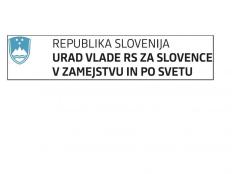Research of endangered dialects in the Slovene language area (Brest with surroundings, Savudrija with surroundings, Porabje, Nadiža – Natisone and Ter – Torre valleys)
Principal Investigator at ZRC SAZU
Mojca Kumin Horvat, PhD-
Original Title
Raziskovanje ogroženih narečij v slovenskem jezikovnem prostoru (Brest z okolico, Savudrija z okolico, Porabje, Nadiške in Terske doline)
Project Team
Januška Gostenčnik, PhD, Janoš Ježovnik, PhD, Karmen Kenda - Jež, PhD, Nina Pahor, Primož Pipan, PhD, Miha Sušnik, PhD, Matej Šekli, PhD, Jožica Škofic, PhD, Danila Zuljan Kumar, PhD-
Project ID
V6-24075
-
Duration
1 October 2024–30 September 2027 -
Project Leader
-
Financial Source
Urad vlade za Slovence v zamejstvu in po svetu

ARIS - Javna agencija za znanstvenoraziskovalno in inovacijsko dejavnost Republike Slovenije

The aim of this research project is to acquire new findings and improve the knowledge essential for the development of Slovenian dialectology and Slovenian linguistics in general. Its goal is to promote and continue systematic dialectological studies outside Slovenia where the use of native Slovenian dialects is gradually disappearing. These are dialects with weak intergenerational transfer that are mainly spoken by middle-aged and older individuals. To monitor their status, it is therefore vital to develop a uniform field research plan based on a common methodology of collecting material. This will be an important contribution to Slovenian dialectology, especially the methodology of studying dialects in language contact areas.
A well-thought-out lexical and phonetic questionnaire will be created for each study area to identify the differential lexical, morphological, and phonetic features of individual local dialects and subdialects, and to allow more accurate delimitation of dialects and thus the creation of detailed regional dialect maps. An especially important contribution to Slovenian dialectology will be made by comparative research findings on linguistic features in contact between three languages with different degrees of linguistic affinity (Hungarian, Romance and Croatian contact language varieties).
The studies will both document the dialects and establish their existence and vitality, and at the same time promote their actual preservation. Using professional recording equipment in field research makes it possible to make research findings available as they arise. A freely available corpus of quality audio recordings and detailed descriptions of individual local dialects not only preserve linguistic cultural heritage, but also provide firm support to the linguistic community in preserving and revitalizing language. In any small community, contact with researchers significantly strengthens the linguistic confidence of dialect speakers. Recording and describing a disappearing dialect and addressing it in scholarly literature also triggers positive linguistic-policy effects and, first and foremost, also contributes to preserving the awareness of the Slovenian identity of a specific dialect. Namely, speakers do not automatically connect their dialect with (standard) Slovenian.
The type of studies planned will depend on the level of research conducted to date:
a) Pilot studies will be carried out in less-studied areas and will primarily focus on identifying the existence of the dialect, providing a basic description of the dialect, determining the area it is spoken in, and establishing its internal structure.
b) Based on the findings of previous studies, the planned dialect studies will document dialects in detail. Their aim is to collect grammatical, lexical, and textual material.
Research is planned on five areas in three countries neighboring Slovenia:
- Croatia: identifying the area of the Šavrinsko subdialect of Istrian dialect
- Italy: identifying the area of the Tersko dialect; identifying the area of the Nadiško dialect
- Hungary: identifying differences and similarities between the Porabje and northern Prekmurje (Goričko) dialects
1. Preliminary study preparation - In progress (October 2024–March 2025)
2. Preparation for fieldwork - In progress (November 2024–September 2025)
3. Collecting dialect material (fieldwork) - In progress (November 2024–August 2027)
3.1. Savudrija with surroundings (November 2025–December 2025)
3.2. Porabje (December 2025–February 2026)
3.3. Ter – Torre valleys (March 2026–May 2026)
3.4. Nadiža – Natisone valleys - (June 2026–October 2026)
3.5. Brest with surroundings (October 2026–December 2026)
4. Analysis (November 2026–April 2027)
5. Synthesis (May 2027–September 2027)